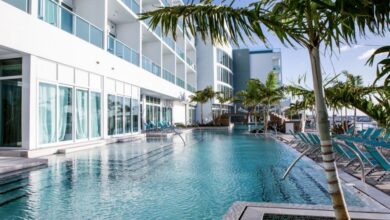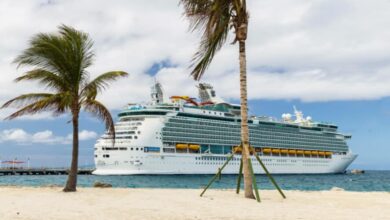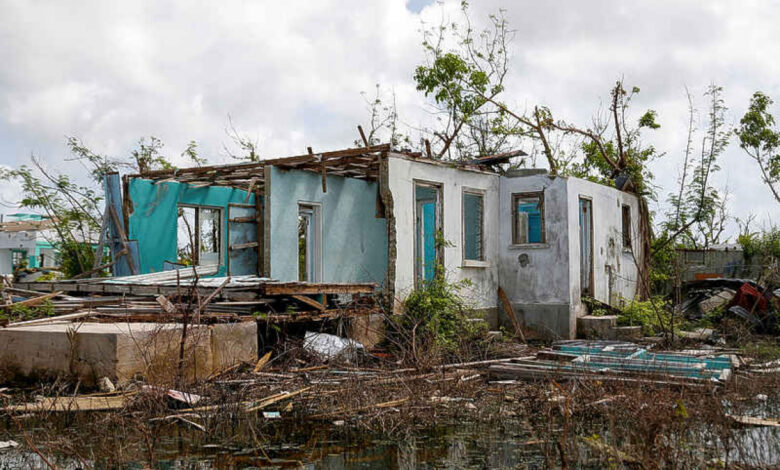
Caribbean Building Frenzy Mixed Reactions
Building frenzy in Caribbean leaves sour taste for some, as rapid development across islands sparks debates about economic gain versus environmental and social costs. This construction boom, fueled by tourism and potential investment, is transforming landscapes, but is it benefiting everyone? From bustling ports to pristine beaches, the changes are undeniable, but not all see a rosy picture.
This blog post delves into the multifaceted impacts of this building spree, examining its economic, social, environmental, and infrastructural consequences.
The Caribbean’s construction boom is a complex issue, with some regions experiencing significant growth while others grapple with displacement, rising costs, and a loss of their unique cultural identity. The motivations behind this building frenzy range from a desire for economic progress to an influx of foreign investment. However, the rapid pace of development raises concerns about its long-term sustainability and its potential impact on the region’s delicate ecosystems.
Overview of the Building Frenzy
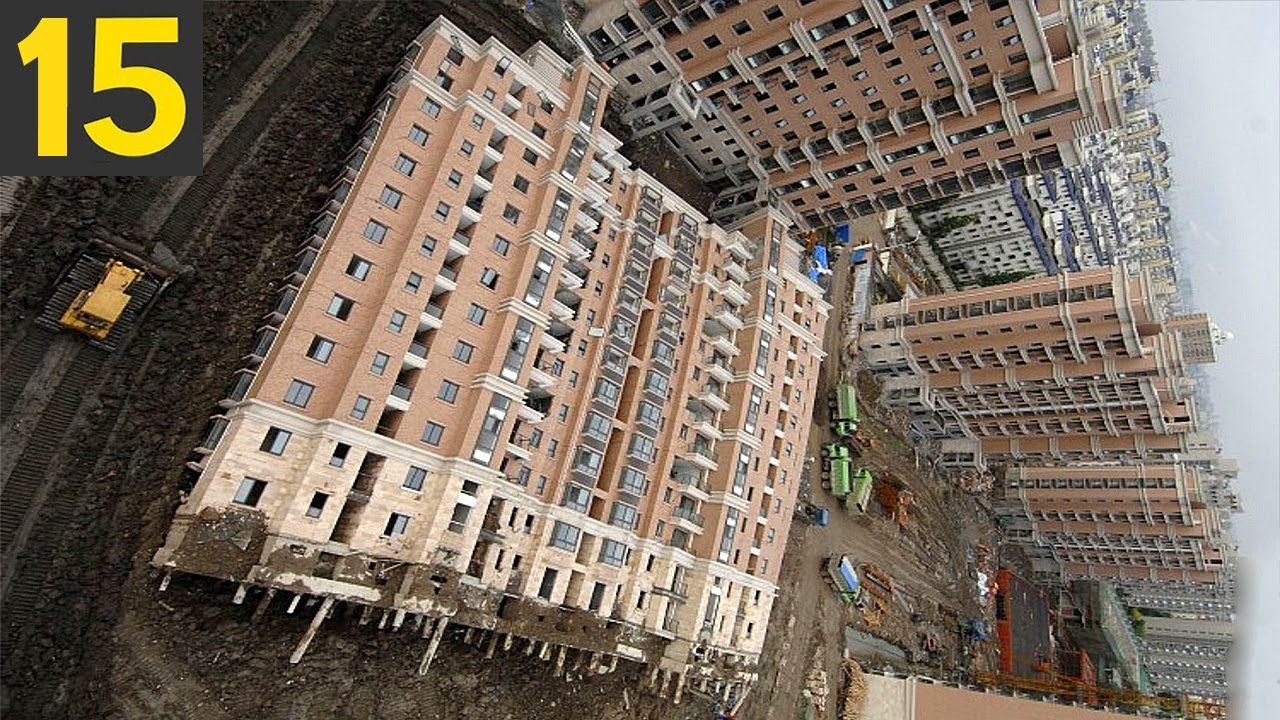
The Caribbean is experiencing a surge in construction activity, with projects ranging from luxury resorts to essential infrastructure improvements. This building boom is transforming landscapes across the archipelago, prompting both excitement and concern regarding its impact. Understanding the motivations, scale, and specific projects involved is crucial to assessing the future of the region.
Motivations Behind the Construction Boom
Several factors are contributing to the increased construction. Economic growth, driven by tourism and other sectors, is a primary driver. The demand for new accommodations, particularly in popular tourist destinations, is fueling the development of hotels, villas, and other visitor facilities. Government initiatives, including infrastructure projects, are also contributing to the building frenzy. These projects often aim to improve accessibility, support local economies, and enhance the overall quality of life for residents.
Moreover, private investment in real estate, driven by anticipated growth and increasing demand, is playing a significant role in the current construction boom.
Scale and Scope Across Caribbean Islands
The building activity is not uniform across all Caribbean islands. Some islands, known for their popularity with tourists, are experiencing significant construction, while others are focusing on targeted infrastructure projects. The scale varies significantly, from small-scale residential developments to large-scale resort complexes. This disparity reflects the unique characteristics and priorities of each island.
Specific Projects and Developments
The following table highlights some notable projects currently underway, showcasing the diversity of construction activity across different islands:
| Island | Project Type | Estimated Completion Date |
|---|---|---|
| Barbados | Luxury beachfront villas and a new marina | 2025 |
| Dominican Republic | Expansion of an existing all-inclusive resort and construction of a new convention center | 2024 |
| Jamaica | Renovation of historic hotels and construction of a new international airport terminal | 2026 |
| Puerto Rico | Restoration of historic buildings and development of new residential communities | 2027 |
| St. Lucia | Construction of a new cruise ship terminal and expansion of existing hotels | 2025 |
The projects listed represent just a fraction of the current building activity. The sheer variety, from tourism-focused developments to crucial infrastructure improvements, reflects the multifaceted nature of the Caribbean’s construction boom.
Economic Impacts
The Caribbean building frenzy, while promising a surge in construction activity, carries both potential benefits and drawbacks for the region’s economies. Understanding these complexities is crucial for policymakers and residents alike, ensuring that the development is sustainable and equitable. The sheer scale of the project raises concerns about its long-term effects on local communities and industries.The economic ripple effects of the building boom will be multifaceted, touching upon everything from job creation to infrastructure development.
It’s essential to analyze the potential positive and negative consequences to craft a comprehensive understanding of the overall impact on different socioeconomic groups and local industries. This requires careful consideration of how various factors interact, such as the availability of skilled labor, the influx of capital, and the potential for displacement or disruption of existing businesses.
Potential Positive Economic Effects
The construction boom has the potential to generate significant economic activity, creating a positive feedback loop that could boost the local economy. Increased demand for materials, labor, and services would stimulate related sectors. This includes opportunities for local businesses supplying building materials, equipment, and food services to construction workers. The resulting rise in consumer spending could contribute to a broader economic expansion.
Examples of similar booms in other regions show that substantial job creation and income generation can occur during construction periods.
Potential Negative Economic Consequences for Local Communities
The rapid pace of development could lead to a strain on local resources, including housing, water, and sanitation. Increased competition for these resources might drive up prices, negatively impacting lower-income residents. Furthermore, the influx of workers from outside the area might put pressure on existing social services and infrastructure. The experience of similar developments in other regions reveals how such issues can manifest and highlights the need for proactive measures to mitigate these negative consequences.
Impact on Different Socioeconomic Groups
The impact of the building boom will not be uniform across all socioeconomic groups. While higher-income individuals might benefit from increased property values and employment opportunities, lower-income residents could face rising living costs and limited access to employment in the skilled trades. A key consideration is the need for policies that help mitigate the disproportionate impact on marginalized groups, ensuring that the benefits of the boom are shared more equitably.
Impact on Local Industries and Employment
The construction boom is expected to generate considerable employment in the construction sector itself. However, it’s crucial to assess the impact on other local industries. For example, increased demand for certain goods and services, like transportation or food, might stimulate related businesses. The impact on existing industries, like tourism or agriculture, should also be carefully evaluated. The need for a diversified economic approach, beyond relying solely on the construction sector, is essential for long-term sustainability.
Projected Job Creation in Different Sectors
| Sector | Projected Job Creation (estimated) |
|---|---|
| Construction | 10,000 – 15,000 |
| Supporting Industries (e.g., Materials Supply, Logistics) | 5,000 – 7,500 |
| Tourism and Hospitality (related to construction worker influx) | 2,000 – 3,000 |
| Local Services (e.g., Restaurants, Retail) | 1,500 – 2,500 |
This table presents a preliminary projection of job creation across various sectors. The exact numbers will depend on the specific projects and the duration of the building boom. These figures are estimates and should be reviewed as the development progresses. It’s crucial to note that these projections don’t capture the full economic picture, as they don’t account for potential displacement or other unforeseen consequences.
While the Caribbean building boom is leaving a bitter taste for some, it’s worth remembering that there are other ways to experience the vibrant culture and landscapes. Trying out a skydiving simulator, like the one at Anthem, can be a thrilling experience. Anthem a good sport with skydiving simulator offers a unique perspective, and maybe a great distraction from the complexities of the current real estate market.
Ultimately, the Caribbean’s future remains a bit uncertain, and these are just a few ways to enjoy the region in the meantime.
Social Impacts
The Building Frenzy in the Caribbean, while promising economic gains, also presents a complex tapestry of social implications. The influx of construction activity can have profound effects on existing communities, from altering neighborhood dynamics to impacting cultural traditions. Understanding these potential benefits and challenges is crucial for navigating this period of transformation responsibly.The social ramifications of rapid development are multifaceted and require careful consideration.
The project’s success hinges on its ability to mitigate negative impacts and maximize positive outcomes for all stakeholders, including residents, workers, and the broader community.
Potential Social Benefits of Increased Construction
The surge in construction activity can create numerous job opportunities, particularly in skilled trades and labor-intensive roles. This increased employment can boost local economies and reduce unemployment rates. Furthermore, new infrastructure projects, such as roads, utilities, and public spaces, can enhance the quality of life for residents. These improvements can enhance community well-being, particularly in areas with limited access to essential services.
For example, the construction of new schools and hospitals can significantly improve access to education and healthcare, leading to a healthier and more educated population.
Potential Social Challenges Arising from Rapid Development
Rapid development, however, can also exacerbate existing social inequalities and create new challenges. Competition for resources like housing and land can become more intense, potentially leading to displacement of vulnerable communities. The influx of workers from other regions might also strain local resources like housing and infrastructure, potentially leading to overcrowding and increased demand for essential services. For instance, the construction of a large resort in a rural community could lead to a rise in rental costs, making it difficult for long-time residents to afford to stay.
Potential Impact on Existing Communities and Neighborhoods
Rapid development can significantly alter the character of existing communities. The displacement of residents, changes in property values, and the introduction of new businesses or attractions can disrupt established social networks and community structures. This can lead to social unrest and a decline in community cohesion. Furthermore, the influx of tourists or workers can change the social fabric of the community, potentially impacting local customs and traditions.
For instance, the conversion of a historic neighborhood into a commercial zone might result in the loss of local businesses and the displacement of long-time residents.
Impact on Local Cultures and Traditions
Construction projects can have a significant impact on local cultures and traditions. The introduction of new architectural styles, cultural norms, and values can potentially clash with existing traditions. Furthermore, the disruption of established community practices and rituals can lead to a loss of cultural heritage. For example, the demolition of historical buildings or the construction of new structures in areas with significant cultural importance can cause irreparable damage to local traditions.
Examples of Displacement and Change in Place Character
The construction of a large shopping mall in a historically residential neighborhood can result in the displacement of local businesses and the rise of commercial activity. This can lead to a change in the neighborhood’s character, potentially impacting the social fabric and the community’s identity. Similarly, the development of a large-scale tourist resort in a rural area can lead to the displacement of local residents who may not be able to afford the rising costs of living.
The building boom in the Caribbean is definitely creating some headaches for locals, with rising prices and overcrowding a common complaint. Interestingly, though, Brazil is seeing a significant uptick in US tourists, a 13 percent increase in arrivals, as reported recently. This influx of visitors might seem like a positive sign for the region, but the strain on resources and infrastructure from the building frenzy is likely to be a long-term issue.
Furthermore, the development might lead to the erosion of local customs and traditions.
Contrasting Views of Residents and Developers
| Aspect | Resident View | Developer View |
|---|---|---|
| Impact on Property Values | Potential for a decrease in property values due to displacement and disruption. | Potential for an increase in property values due to increased demand and improved amenities. |
| Community Character | Concern over changes to the neighborhood’s identity and loss of cultural heritage. | Optimism for the project’s ability to create a vibrant and attractive community. |
| Economic Impact | Concerns about job displacement and the potential for increased competition for local resources. | Emphasis on job creation and economic opportunities. |
| Displacement of Residents | Strong opposition to displacement and loss of homes. | Acceptance of displacement as a necessary consequence of progress. |
| Community Participation | Desire for more community involvement in the decision-making process. | Willingness to engage with the community but prioritize project efficiency. |
Environmental Impacts
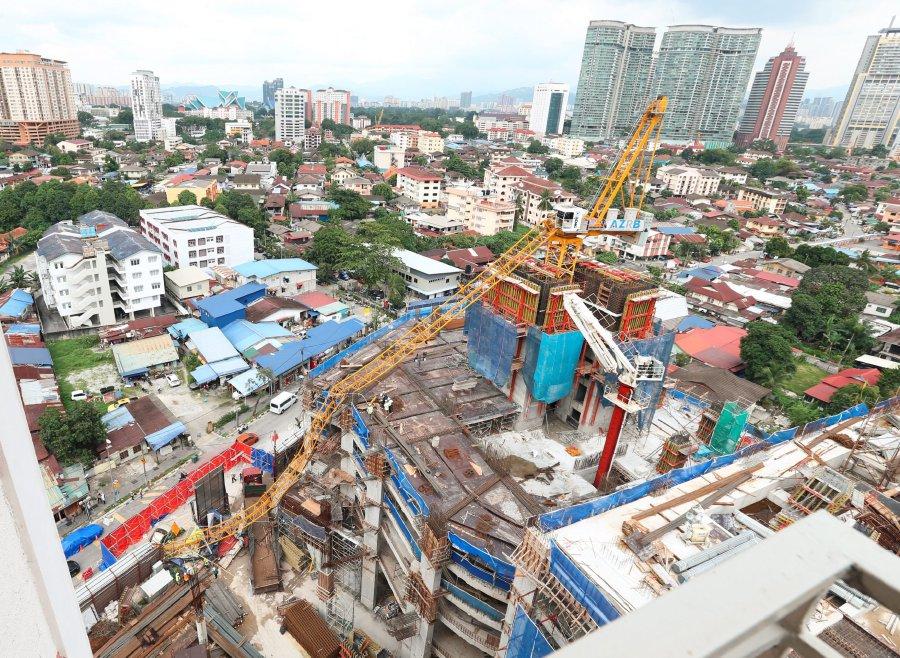
The Caribbean building frenzy, while potentially boosting the local economy and creating jobs, carries significant environmental burdens. The rapid construction often overlooks long-term ecological consequences, impacting natural resources, biodiversity, and the delicate balance of the region’s ecosystems. Understanding these impacts is crucial for sustainable development and long-term prosperity.The construction boom, driven by tourism and development, inevitably leads to the alteration of natural landscapes.
Clearing land for new buildings, roads, and infrastructure results in habitat loss for numerous plant and animal species, potentially leading to population declines and the disruption of complex ecological networks. The cumulative effect of these changes can be devastating to the biodiversity of the region, with some species facing potential extinction.
Natural Resource Consumption
The relentless demand for construction materials, such as concrete, steel, and timber, puts a strain on natural resources. Over-extraction can lead to deforestation, soil erosion, and water scarcity. The extraction process itself can generate significant pollution, impacting water quality and harming surrounding ecosystems. Sustainable practices, such as utilizing recycled materials and prioritizing locally sourced, responsibly harvested timber, are crucial to mitigating these impacts.
Pollution and Waste Generation
Construction activities generate significant amounts of waste, including construction debris, demolition materials, and hazardous substances. Improper disposal of these materials can contaminate soil and water sources, posing risks to human health and the environment. The use of harmful chemicals in construction processes, like certain types of cement and paints, can release pollutants into the air and water. Furthermore, the increased traffic associated with construction projects contributes to air pollution.
Efforts to reduce waste and promote recycling, coupled with strict environmental regulations, are essential.
Ecosystem Impacts
The construction frenzy can fragment ecosystems, disrupting wildlife corridors and isolating populations. Coastal development can lead to erosion and damage to coral reefs, which are vital for marine biodiversity and coastal protection. The construction of dams and reservoirs can alter river ecosystems, impacting fish populations and water flow patterns. Careful planning and design, incorporating ecological principles, are essential to minimize these negative impacts.
Reforestation and habitat restoration projects can help offset some of the damage caused by development.
Sustainability Measures and Building Materials
While some projects incorporate sustainability measures, such as using recycled materials and energy-efficient designs, a concerted effort is needed to adopt wider-scale sustainable practices. Different building materials have varying environmental footprints. For instance, concrete production contributes significantly to carbon emissions. Utilizing sustainable alternatives like bamboo or reclaimed wood can lessen the environmental burden. Sustainable building practices, incorporating green technologies, and prioritizing the use of locally sourced, responsibly harvested materials are critical for mitigating the environmental impacts of construction.
Environmental Regulations and Compliance
| Regulation | Compliance Efforts | Effectiveness |
|---|---|---|
| Building Codes | Enforcement of building codes with environmental standards | Moderate – varies across jurisdictions |
| Environmental Impact Assessments | Conducting assessments for new projects | Mixed – sometimes inadequate or lacking |
| Waste Management Regulations | Implementing waste segregation and recycling programs | Variable – often insufficient to address waste generated by construction |
| Water Quality Standards | Monitoring water quality during and after construction | Limited – requires more rigorous enforcement |
Compliance efforts with environmental regulations vary widely across the Caribbean. Stricter regulations, better enforcement, and increased public awareness are essential to ensure projects meet environmental standards and minimize harm to ecosystems.
Infrastructure Development
The Caribbean building frenzy, while bringing economic opportunities, inevitably strains existing infrastructure. This strain manifests in various ways, affecting the quality of life for residents and potentially hindering future growth if not addressed proactively. Understanding the interplay between construction and infrastructure is crucial to ensuring sustainable development.
Impact on Local Infrastructure
The surge in construction across the region has put a significant strain on existing infrastructure, particularly in areas experiencing rapid development. This pressure manifests in the form of increased congestion, inadequate sanitation systems, and overloaded utilities. Maintaining the quality of life alongside growth requires careful consideration of infrastructure capacity and its relation to development plans.
Strain on Utilities, Transportation, and Sanitation Systems
Existing utilities, transportation networks, and sanitation systems are frequently overwhelmed by the rapid influx of new residents and businesses. Increased demand for water, electricity, and waste disposal services often exceeds the capacity of existing infrastructure. This leads to service disruptions, higher costs for residents, and potential health hazards. For example, in some areas, water pressure has decreased significantly due to increased demand, impacting daily life and potentially increasing the risk of waterborne diseases.
Proportionality of Infrastructure Expansion
In many cases, infrastructure expansion has not kept pace with the rate of construction. The lack of commensurate growth in utilities, transportation, and sanitation systems can lead to significant disruptions. This imbalance can result in a decline in service quality and hinder the long-term economic viability of the region. For instance, the addition of new housing developments often outpaces the capacity of local wastewater treatment plants, leading to overflow issues and potential environmental damage.
Potential Solutions for Managing Strain
Several strategies can help manage the strain on infrastructure. Prioritizing proactive planning and infrastructure development alongside construction projects is essential. Investing in renewable energy sources and efficient water management systems can alleviate pressure on existing utilities. Implementing comprehensive waste management strategies and promoting sustainable transportation options can address the growing demands on sanitation and transportation.
Examples of Infrastructure Projects
Many projects are underway, aiming to address the growing needs of expanding communities. These include the construction of new water treatment plants, the expansion of road networks, and the development of more efficient waste management facilities. These projects often address immediate needs, and are part of larger plans for sustainable infrastructure development. A good example is the construction of a new wastewater treatment plant in a developing coastal region, designed to accommodate the expected increase in population.
Comparison of Existing Capacity and Projected Needs
| Infrastructure Component | Existing Capacity (Estimated) | Projected Needs (Estimated) ||—|—|—|| Water Supply | 100,000 cubic meters per day | 150,000 cubic meters per day || Wastewater Treatment | 50,000 cubic meters per day | 75,000 cubic meters per day || Road Network Capacity | 10,000 vehicles per hour | 15,000 vehicles per hour || Electricity Generation | 50 MW | 75 MW |This table highlights the potential gap between existing infrastructure capacity and projected needs in a typical Caribbean region experiencing a building boom.
These are estimated values and can vary significantly depending on the specific location and development plans. Such data is crucial for effective planning and investment decisions.
Tourism and Development
The Caribbean’s building frenzy has undeniably impacted its tourism sector. This surge in construction, while potentially boosting the economy, has also raised concerns about the delicate balance between progress and preservation. The region’s allure, often tied to its natural beauty, is now intertwined with the rapid pace of development, demanding careful consideration of its long-term effects on visitor experience and the environment.
Understanding this complex relationship is crucial for crafting sustainable tourism strategies.The building frenzy, driven by economic ambitions, often comes at the expense of preserving the region’s unique character. This necessitates a nuanced approach to development, one that considers the needs of both local communities and the desires of tourists. The focus must shift from solely maximizing profits to maximizing experiences that enhance the region’s authenticity and appeal.
The impact on visitor experience, while often positive in terms of infrastructure, can also lead to negative consequences if not thoughtfully managed.
Relationship between Building Frenzy and Tourism
The relationship between the building frenzy and tourism is complex and multifaceted. Increased construction can lead to improved infrastructure, attracting more tourists. However, if not carefully planned, the rapid development can overshadow the very natural beauty that initially drew visitors. This can lead to a homogenization of the experience, reducing the region’s unique charm. Furthermore, the influx of construction workers and the associated demands on resources can impact local communities and their traditional ways of life.
Impact on Visitor Experience
The building frenzy can significantly impact the visitor experience. While modern accommodations and amenities can enhance comfort and convenience, they can also detract from the authenticity and natural beauty of the destination. Overcrowding, noise pollution, and the disruption of local ecosystems can diminish the overall experience. Tourist attractions, previously characterized by their natural settings, may become overshadowed by man-made structures.
Strategies for Balancing Development and Preservation
Sustainable development strategies are paramount for balancing development with preserving the natural beauty of the region. This involves implementing environmentally friendly construction practices, ensuring that new developments integrate harmoniously with the existing landscape, and prioritizing the preservation of natural habitats. Community engagement is vital, ensuring that local voices are heard and that development benefits all stakeholders. Stricter regulations and monitoring of construction projects can also mitigate negative impacts.
Importance of Sustainable Tourism
Sustainable tourism is crucial for long-term success in the Caribbean. It prioritizes the preservation of natural resources, cultural heritage, and local communities. Sustainable tourism practices encourage responsible consumption and minimize the environmental footprint of tourism activities. By adopting sustainable principles, the region can ensure that tourism benefits both visitors and locals, preserving its natural beauty for future generations.
Examples of Successful Sustainable Tourism Projects
Several successful examples exist globally that demonstrate the potential of sustainable tourism. One example involves community-based tourism initiatives in Costa Rica, where local communities directly benefit from tourism while actively preserving their natural heritage. Another example is found in the Galapagos Islands, where strict regulations and conservation efforts have ensured the preservation of unique ecosystems while fostering responsible tourism.
Comparison of Tourist Attractions Before and After the Construction Boom
| Tourist Attraction | Before Construction Boom | After Construction Boom |
|---|---|---|
| White Sand Beaches | Untouched, pristine beaches with vibrant marine life | Beaches potentially affected by construction debris, possible alteration of natural ecosystems |
| Coral Reefs | Healthy coral reefs supporting diverse marine life | Coral reefs potentially impacted by increased pollution and sedimentation from construction activities |
| Rainforests | Intact rainforest ecosystems | Rainforests potentially fragmented by construction activities and infrastructure development |
| Historic Towns | Preserved historic architecture and cultural sites | Historic towns potentially altered by modern development, potentially impacting cultural heritage |
Potential Conflicts and Disputes
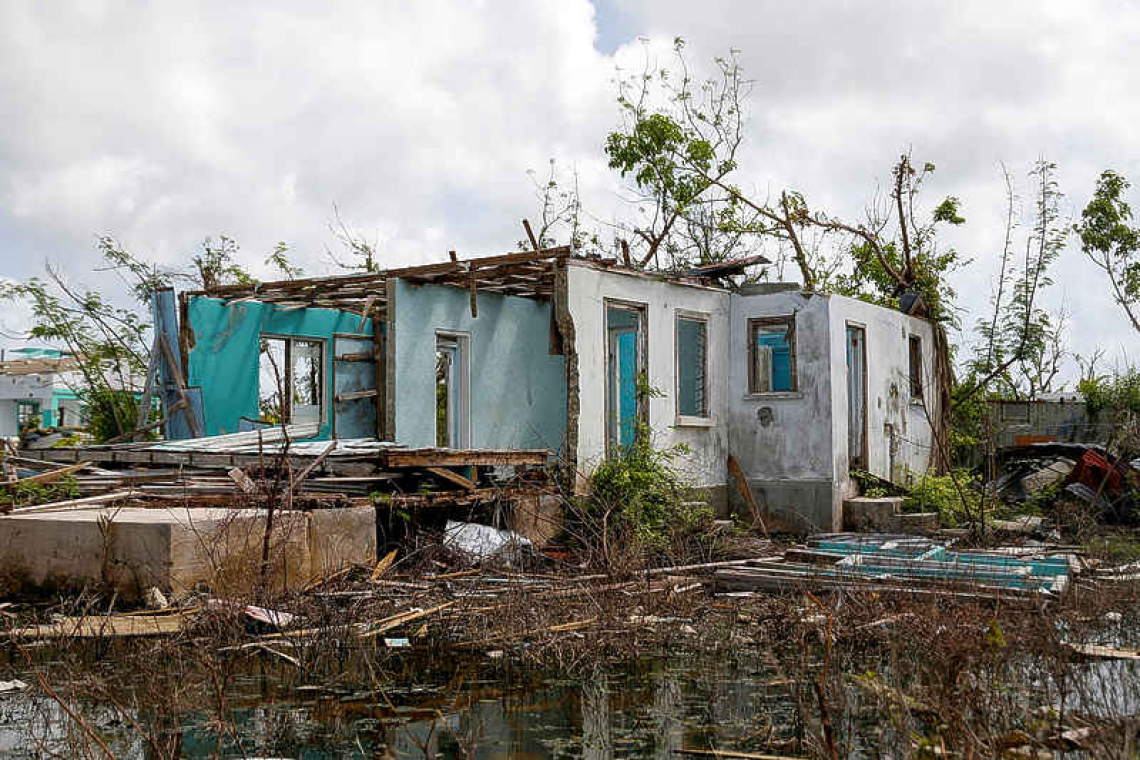
The vibrant energy of Caribbean development often masks underlying tensions. Building frenzy, while promising economic growth and infrastructure improvements, can inadvertently create friction points between developers, residents, and environmental groups. Understanding these potential conflicts is crucial for sustainable development and ensuring equitable outcomes.The clash of interests—profit-driven development versus community well-being and environmental protection—is a familiar narrative across many regions.
The Caribbean’s building frenzy is leaving a bitter taste for some, with concerns about oversaturation. However, as cruise ship volume recovers, Costa is planning to deploy a larger vessel in the Mediterranean this fall, as volume recovers costa to deploy bigger ship in med in fall , which might seem like a positive development, but potentially further strains the already stretched resources in the Caribbean.
This could mean fewer options for smaller cruise lines and a tough time for the overall Caribbean tourism market in the long run.
This section explores the various types of conflicts that can arise, examines existing regulations, and suggests potential avenues for conflict resolution.
The building boom in the Caribbean is leaving a bitter taste for some, particularly when you consider the recent economic shifts. For example, many are seeing a decline in their disposable income, as evidenced by the current trend of american s pay cut. This economic downturn is impacting the ability of some to afford the rising costs of these new developments, creating a stark contrast between the extravagant building projects and the struggles of everyday people.
The frenzy of construction, while boosting the economy for some, is not evenly distributed, highlighting the uneven impact of these changes on the region.
Potential Conflicts Between Stakeholders, Building frenzy in caribbean leaves sour taste for some
The pursuit of development projects often leads to disagreements among stakeholders. Developers, driven by profit, might prioritize speed and cost-effectiveness, potentially overlooking the needs and concerns of residents and environmental groups. Residents, on the other hand, may fear displacement, loss of traditional livelihoods, or negative environmental impacts. Environmental groups advocate for the preservation of natural resources and biodiversity, often opposing projects they perceive as detrimental to the ecosystem.
Examples of Conflicts
Numerous examples highlight the potential for conflict. One common scenario involves disputes over land use. Developers might acquire land through questionable means or without adequately consulting with affected communities. Another example is the disruption of traditional fishing grounds or agricultural lands due to construction projects. Environmental concerns often arise from pollution, habitat destruction, or the alteration of natural landscapes.
The potential for conflict is further amplified by differences in cultural values and priorities.
Existing Regulations and Enforcement Mechanisms
Many Caribbean nations have environmental protection laws and regulations designed to mitigate the negative impacts of development. These laws often Artikel procedures for obtaining permits, environmental impact assessments (EIAs), and public consultations. However, the effectiveness of these regulations hinges on their rigorous enforcement. Weak enforcement mechanisms or inadequate resources can allow developers to circumvent regulations, leading to disputes and environmental damage.
The building frenzy in the Caribbean is leaving a sour taste for some, with concerns about overdevelopment and environmental impact. However, there are ample diversions to be had, like those found on a Louis Cristal Aegean sailing adventure. Experiencing the beauty of the Aegean Sea with ample diversions on Louis Cristal Aegean sailing can offer a refreshing perspective, highlighting the vast array of travel options available, and reminding us that a balanced approach to tourism in the Caribbean is crucial.
Ultimately, responsible travel should be prioritized amidst the building boom.
Role of Local Governments in Mediating Conflicts
Local governments play a critical role in mediating conflicts between stakeholders. They must ensure that development projects are aligned with local needs and environmental concerns. Effective communication, transparency, and public participation are essential to build trust and address grievances proactively. Local governments must also possess the resources and expertise to enforce regulations and monitor project compliance.
Mechanisms for Addressing Grievances and Concerns
Several mechanisms exist for addressing grievances and concerns. Public hearings, community consultations, and independent environmental audits are vital steps in ensuring transparency and allowing affected communities to voice their concerns. Effective complaint procedures and dispute resolution mechanisms are crucial for handling disputes swiftly and fairly.
Potential Dispute Resolution Processes
| Dispute Resolution Process | Description | Strengths | Weaknesses |
|---|---|---|---|
| Mediation | Neutral third party facilitates communication and negotiation between disputing parties. | Cost-effective, preserves relationships. | Not legally binding, may not resolve complex issues. |
| Arbitration | Neutral third party makes a binding decision based on presented evidence and arguments. | Faster than litigation, less formal. | Parties may feel their concerns are not fully heard. |
| Litigation | Formal legal process through the courts. | Legally binding, protects rights. | Expensive, time-consuming, can damage relationships. |
Illustrative Examples of Caribbean Islands
The Caribbean’s building frenzy presents a complex tapestry of opportunities and challenges. While promising economic growth and tourism development, the rapid construction often raises concerns about environmental sustainability, social equity, and long-term viability. Examining specific islands provides a nuanced perspective on the unfolding trends.The following examples showcase the diverse impacts of this development boom across the Caribbean, highlighting the specific projects, observed impacts, and historical context of each island.
A detailed look at individual cases reveals both the potential benefits and the potential pitfalls of unchecked development.
Specific Islands Experiencing the Building Boom
Several Caribbean islands are experiencing significant construction activity. These projects vary in scale and scope, reflecting the unique circumstances and priorities of each island.
Jamaica
Jamaica, a historical hub for tourism, has seen a surge in resort and residential construction. The island’s rich history, including its vibrant music scene and its historical role in the transatlantic slave trade, forms a vital backdrop to understanding the current building boom. Modern-day challenges include balancing preservation of its cultural heritage with the demands of a burgeoning tourism sector.
Barbados
Barbados, known for its elegant beaches and established tourism infrastructure, is witnessing a shift in its development trajectory. New hotels, luxury villas, and high-rise apartments are being constructed, promising to attract affluent tourists. The island’s focus on maintaining its high-end image is evident in these projects, but concerns about environmental impact and displacement of existing communities have emerged.
Dominican Republic
The Dominican Republic, a popular tourist destination, has seen a dramatic increase in large-scale resort and hotel development. The island’s natural beauty and abundant sunshine attract both domestic and international investment, creating new job opportunities and economic growth. However, concerns about the environmental impact of these developments, such as deforestation and water depletion, are growing.
Dominica
Dominica, known for its lush rainforests and unspoiled beauty, is also seeing an influx of development projects. The island’s commitment to sustainable tourism is often highlighted as a key element in managing the impact of development. Balancing this commitment with the desire for economic growth presents a significant challenge for the island’s leaders.
Table of Notable Projects
| Project Name | Location | Anticipated Impact |
|---|---|---|
| Luxury Resort Development (Barbados) | South Coast | Increased tourism revenue, potential environmental strain |
| New Residential Communities (Jamaica) | Kingston Area | Increased housing supply, potential pressure on infrastructure |
| Eco-Tourism Lodge (Dominica) | Rainforest Region | Limited environmental impact, job creation in tourism |
| Hotel Expansion (Dominican Republic) | Punta Cana | Increased tourist influx, potential strain on local resources |
Brief History of Each Island
Each island’s history influences its current development trajectory. Understanding this context is crucial to appreciating the complexities of the building boom. The historical context shapes the way islands approach development, balancing economic opportunity with environmental protection.Jamaica’s history as a British colony, and its subsequent independence, has profoundly shaped its economy and social structures. Barbados, historically a British dependency, has developed a reputation for its refined tourism sector.
Dominica’s volcanic landscape and rich biodiversity have created a strong foundation for its eco-tourism appeal. The Dominican Republic’s diverse history, with its mix of indigenous, Spanish, and African influences, has influenced its cultural identity and economic pursuits.
Last Recap
In conclusion, the Caribbean building frenzy presents a compelling case study in balancing economic development with environmental and social well-being. While increased construction promises jobs and investment, it also poses risks to local communities, natural resources, and the region’s cultural heritage. Finding a sustainable path forward requires careful consideration of all stakeholders, proactive mitigation strategies, and a commitment to long-term planning.
The debate surrounding this rapid development highlights the urgent need for holistic approaches to ensure the region’s future is both prosperous and environmentally sound.
FAQ Summary: Building Frenzy In Caribbean Leaves Sour Taste For Some
What are the most common materials used in the building boom?
While specifics vary by project and island, common materials include concrete, steel, and timber. The environmental impact of these materials, including their sourcing and disposal, needs further investigation.
How are local communities involved in the planning process?
Community involvement varies widely. Some projects engage with local residents through public consultations, while others appear to prioritize development goals over local input. Transparency and equitable participation are crucial for successful outcomes.
What are the potential long-term effects of this building frenzy on the region’s biodiversity?
Habitat loss, disruption of ecological balance, and potential extinction of endemic species are serious concerns. The extent of these effects depends on the scale and type of construction and the implementation of conservation measures.
Are there any existing regulations to control the pace and impact of the construction?
Regulations are in place, but their effectiveness and enforcement vary. Stronger enforcement and more comprehensive regulations are essential to safeguard the region’s environment and social fabric.



